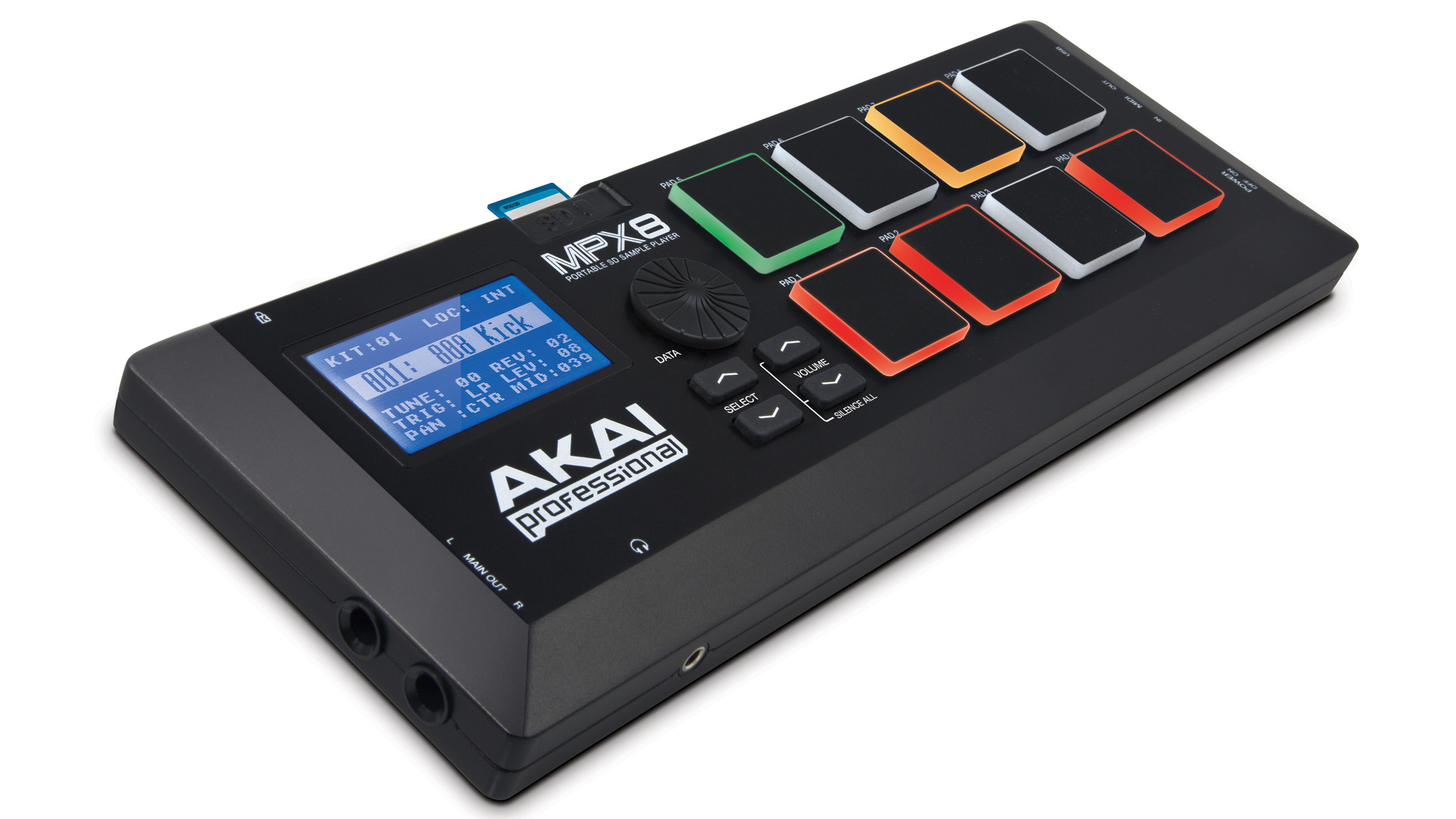NAMM 2013 VIDEO: Akai MPX8 eight-pad sample launcher announced
Load sounds via SD card or software editor
NAMM 2013: Akai's new MPX8 is a compact sample pad controller that enables you to assign sounds to eight velocity- and pressure-sensitive pads via an SD card.
It comes with a built-in library of sounds to get you started, while you can also add samples using the drag-and-drop editor for Mac and PC. Samples can be tuned and treated with reverb, too.
Find out more below or on the Akai Professional website.

Akai MPX8 press release
MPX8 is one of Akai Professional's most innovative pad instruments yet. Using a standard SD card, users can load virtually any sample onto MPX8 and then assign it to any of the unit's eight backlit velocity- and pressure-sensitive pads. MPX8 also comes with a large library of standard samples built in, which can be used for live performance in front of a crowd, on a radio show, or for in-studio production.
Its bright blue backlit display and intuitive interface make for easy operation in any amount of light. A 1/8-inch headphone output, two balanced 1/4-inch outputs, and five-pin MIDI and USB MIDI inputs and outputs are onboard.
"With MPX8, we're giving musicians a quick and convenient way to have one-touch access to a virtually unlimited number of sounds, shots, stabs, and drops," said Dan Gill, Akai Professional Product Manager. MPX8 comes with a drag-and-drop sample editor for Mac® and PC for easy sample conversion. Users can also save sample sets together as kits for easy recall and even tune and add reverb to samples.
Want all the hottest music and gear news, reviews, deals, features and more, direct to your inbox? Sign up here.



I’m the Deputy Editor of MusicRadar, having worked on the site since its launch in 2007. I previously spent eight years working on our sister magazine, Computer Music. I’ve been playing the piano, gigging in bands and failing to finish tracks at home for more than 30 years, 24 of which I’ve also spent writing about music and the ever-changing technology used to make it.